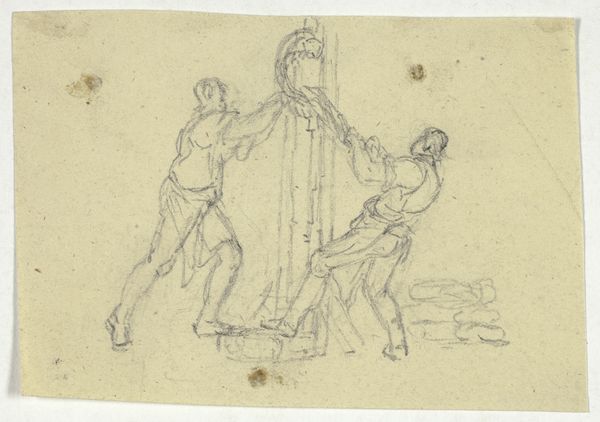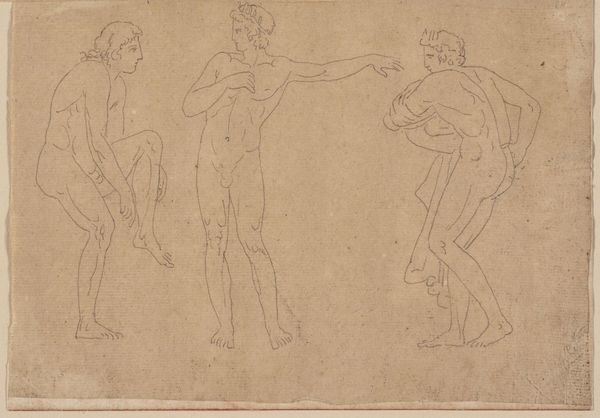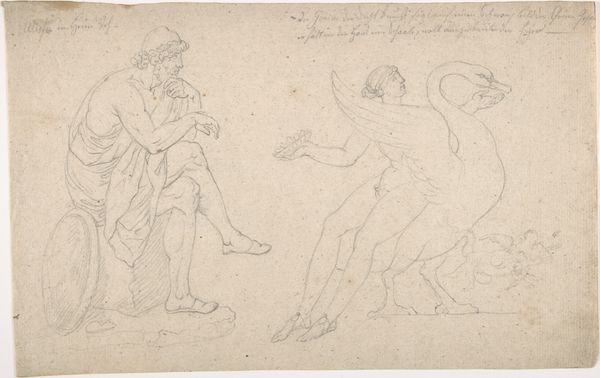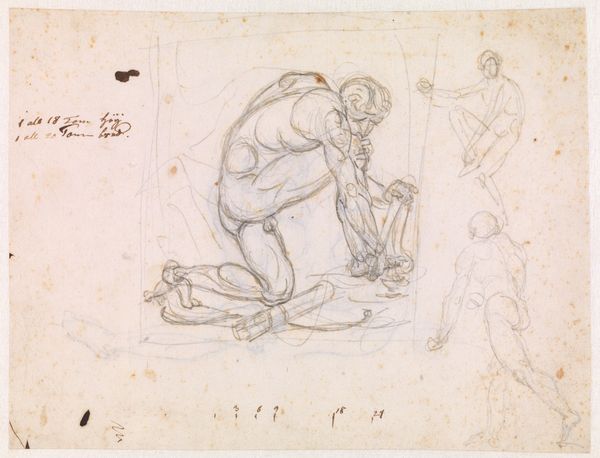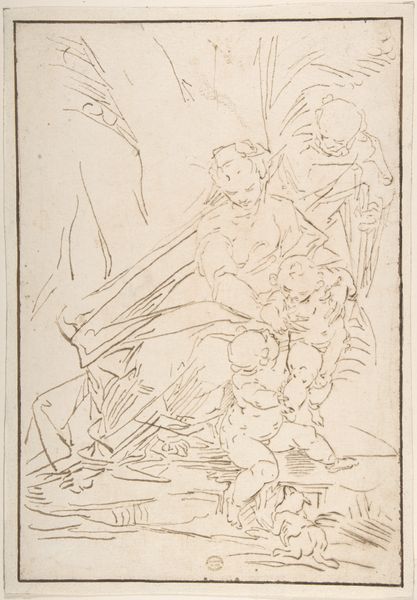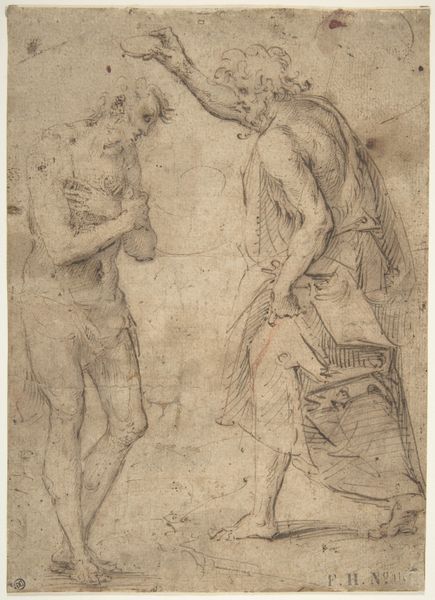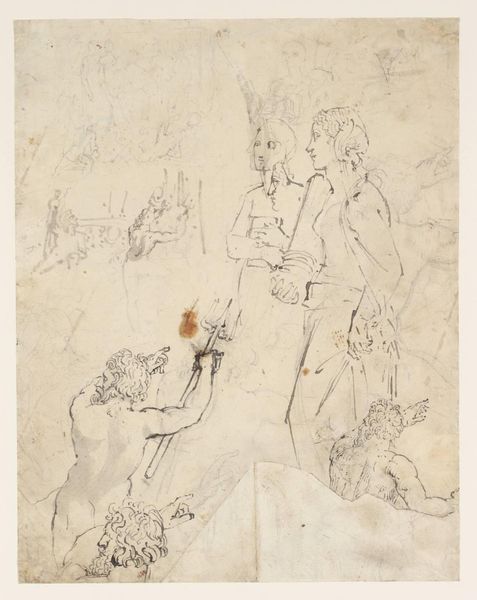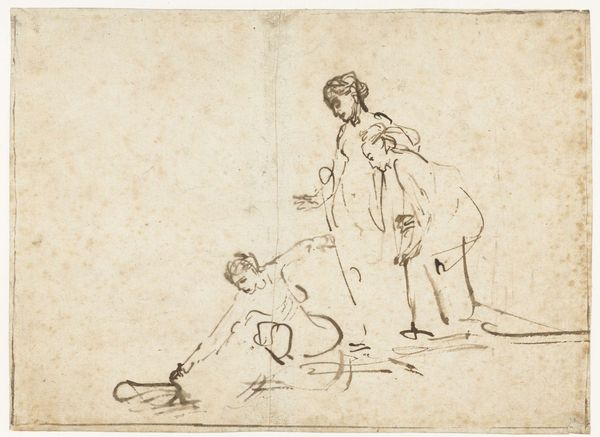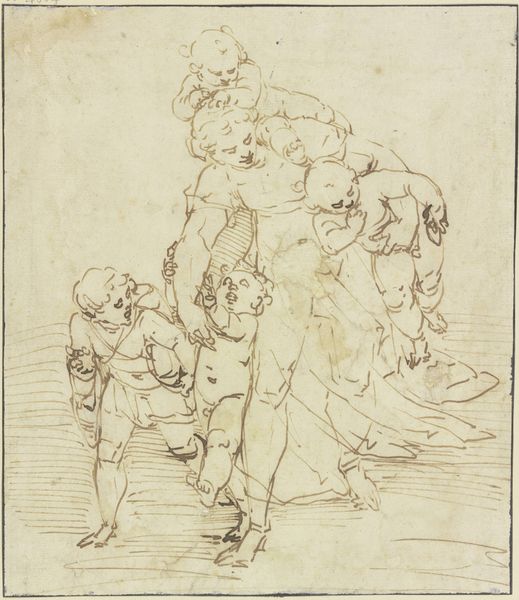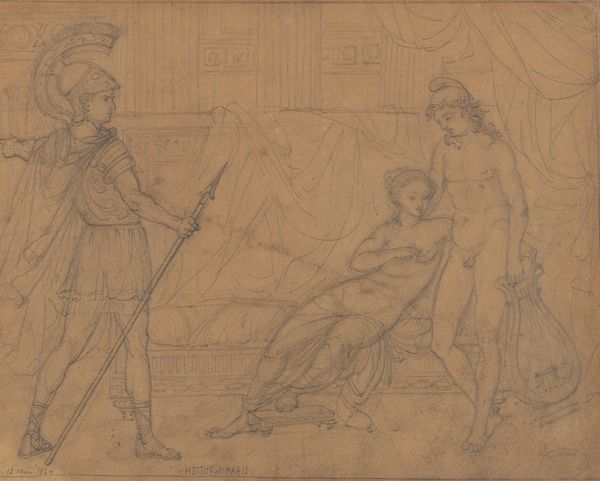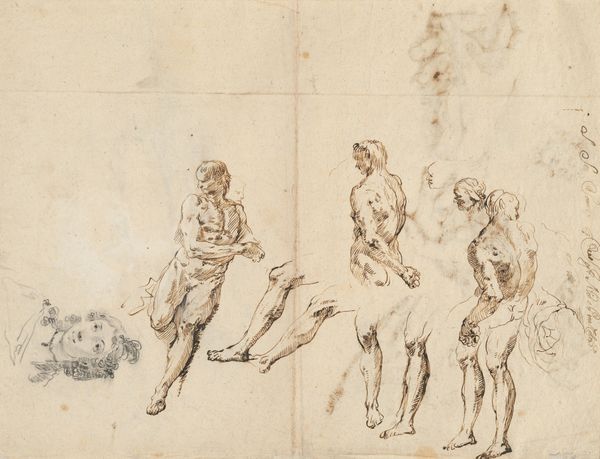
drawing, pencil
#
drawing
#
neoclacissism
#
figuration
#
ancient-mediterranean
#
pencil
#
line
#
history-painting
#
nude
Dimensions: overall: 17 x 22.4 cm (6 11/16 x 8 13/16 in.)
Copyright: National Gallery of Art: CC0 1.0
Curator: Here we see John Flaxman's drawing, dating to around the 1790s, entitled "Otus and Ephialtes Holding Mars Captive." Editor: It’s a very linear drawing, all pencil. The composition is stark, classical, but with a palpable sense of suppressed violence lurking just beneath the surface. The defeated Mars almost disappears into the lower portion. Curator: Indeed, Flaxman was a key figure in the Neoclassical movement. He deeply admired classical antiquity, drawing inspiration from Greek mythology. This work illustrates a scene from the stories, where the giants Otus and Ephialtes imprison the god of war. What resonates here is the symbolic inversion of power dynamics. Editor: And the material means underscore this tension. The hard, unyielding pencil creates this world of firm outlines, even constraint. But it's precisely in those linear structures—the chained limbs, the stark geometry—that the drawing finds its expressive force. It’s not just a mythic tale, but an exploration of power rendered materially visible. The chains are made by human hands. Curator: I find that it invites us to consider representations of masculinity and dominance. Mars, usually the emblem of martial power, is rendered utterly vulnerable and powerless. He's literally chained by these giants, offering an interesting commentary on power structures. Who is considered strong? Editor: Precisely, and by what measure? Consider the implications for gender. The drawing speaks volumes about strength, vulnerability, and the instruments – quite literally in this case with those chains – through which control is exerted, challenged, and perhaps ultimately, subverted. What were the working conditions, the foundries of this metal? This adds more context for reflecting on contemporary injustices through labor. Curator: Looking at the historical context during the late 18th century, which was fraught with revolutions and political upheavals, the piece provides social commentary. In light of the French Revolution, the drawing can be interpreted as a visual meditation on overthrowing established authorities. Editor: Yes. Thank you, it seems so! Curator: The layered meanings contained in Flaxman’s rendering enrich our contemporary lens. It continues to teach us about how images shape discourses around political and interpersonal relations of control.
Comments
No comments
Be the first to comment and join the conversation on the ultimate creative platform.
